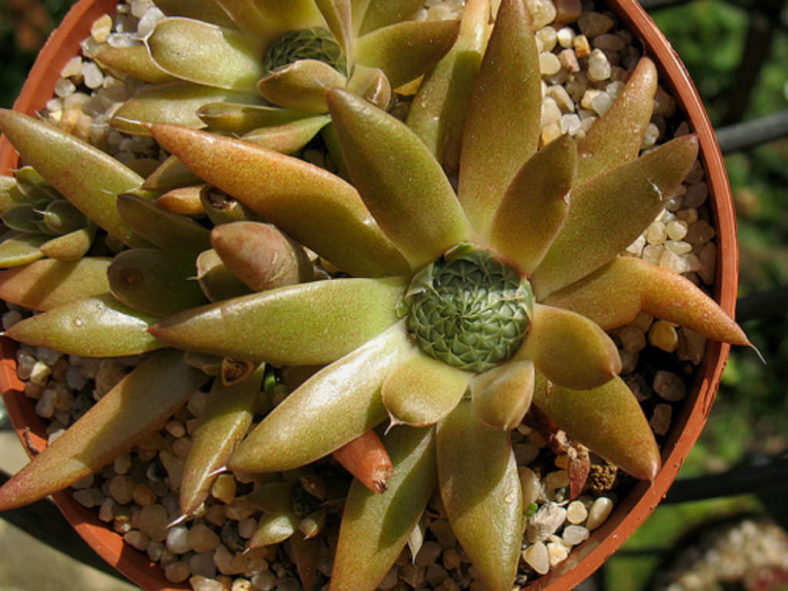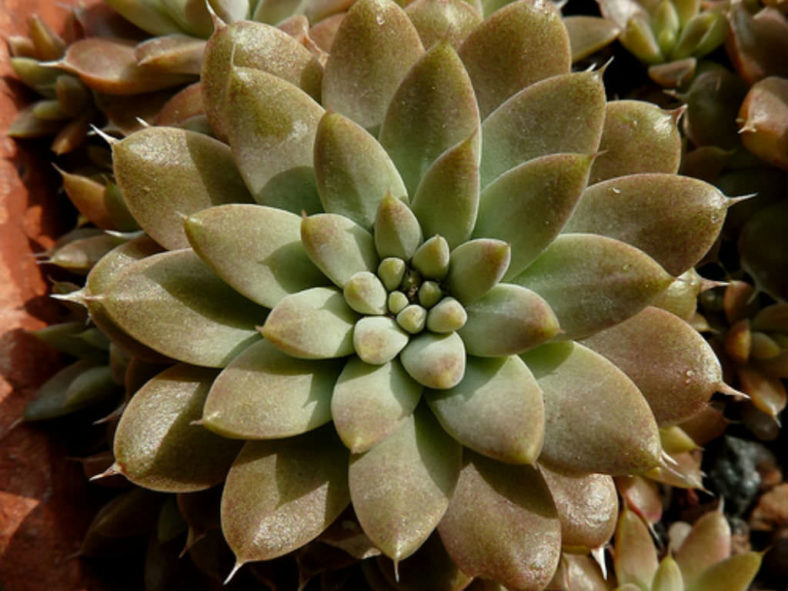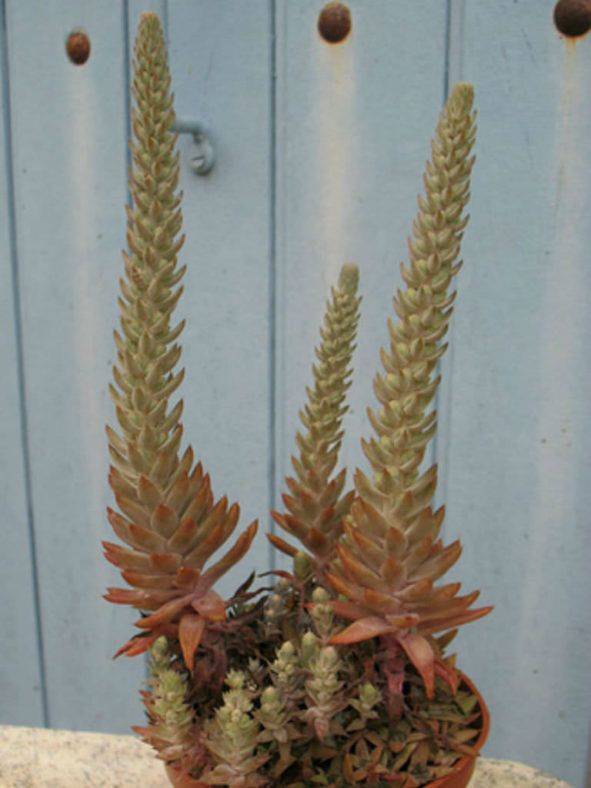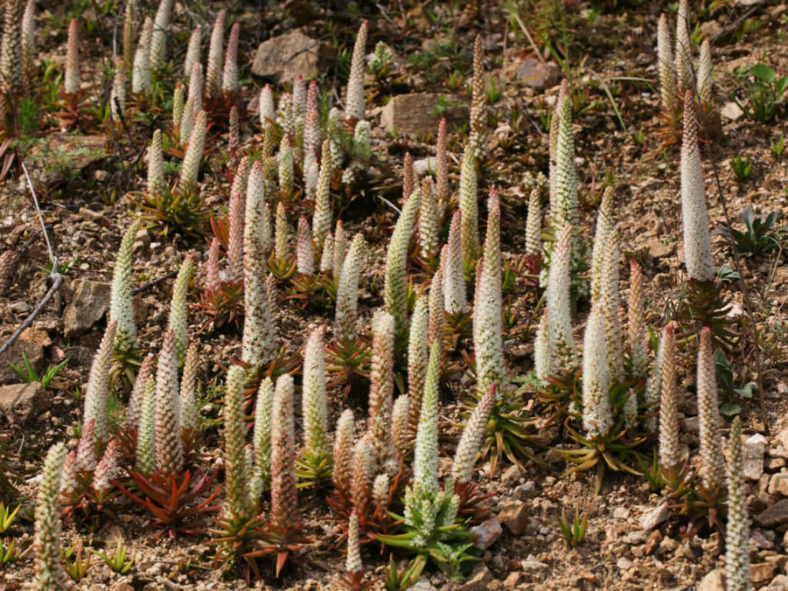Scientific Name
Orostachys fimbriata (Turcz.) A.Berger
Common Name(s)
Dunce's Cap
Synonym(s)
Cotyledon fimbriata, Sedum fimbriatum, Umbilicus fimbriatus
Scientific Classification
Family: Crassulaceae
Subfamily: Sedoideae
Tribe: Sedeae
Subtribe: Umbilicinae
Genus: Orostachys
Origin
Orostachys fimbriata is native to Russia (eastern Siberia), Mongolia, northern, north-eastern, and south-western China, and Tibet. It grows on rocks on slopes, house roofs, and mossy tree trunks.
Description
Orostachys fimbriata is an eye-catching succulent that forms rosettes of fleshy, green to orange or brownish leaves covered with a haze of glaucous gray. The rosettes grow up to 1.6 inches (4 cm) in diameter, slowly producing offsets to make a small clump. Leaves are linear with a spiny apex, up to 0.6 inches (1.5 cm) long and 0.15 inches (0.4 cm) wide.
In late summer, the rosettes produce attractive, up to 6 inches (15 cm) tall spikes of white or pinkish flowers.

Hardiness
USDA hardiness zones 5a to 9b: from −20 °F (−28.9 °C) to 30 °F (−1.1 °C).
How to Grow and Care
As with most similar genera of the Crassulaceae family, this plant can survive in fairly poor soil so long as it is well-draining. This genera is very cold-hardy and can survive temperatures of -30 °F (-34 °C). Allow soil to dry to the touch between waterings and avoid getting water on the rosettes. Orostachys actively grow in spring and summer. It requires some bright light and does not tolerate high humidity well.
Orostachys self-propagates through offshoots; at a given time, one plant will form a dense mat of many. Propagation is primarily through offset separation.
Remove soil from the offset's base to find the stolon (a thick root that attaches the pup to the mother plant) to separate an offset. It is best to use an offset that has already established some roots of its own. Cut the stolon close to the pup (to discourage roots growing from the stolon). Place the offset into a small pot with well-draining, sandy soil. Do not water until new growth is noted.
Learn more at How to Grow and Care for Orostachys.
Links
- Back to genus Orostachys
- Succupedia: Browse succulents by Scientific Name, Common Name, Genus, Family, USDA Hardiness Zone, Origin, or cacti by Genus
Photo Gallery
Click on a photo to see a larger version.



